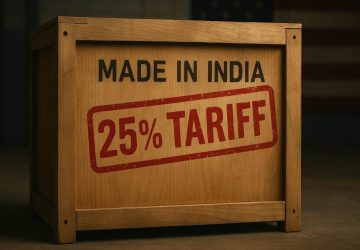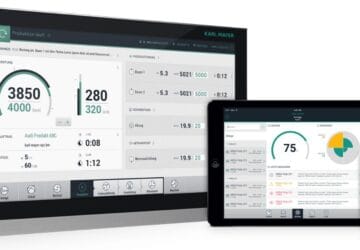 According to details, Pakistan’s textile and apparel exports during the first two months of FY2026 presented a mixed picture. While exports to the European market continued to grow steadily, the U.S. market remained stagnant, the U.K. showed slight improvement, and smaller markets like the UAE and Bangladesh experienced fluctuations. The Pakistan Textile Council’s report highlighted the industry’s heavy dependence on European buyers and the vulnerability tied to volatility in limited export destinations.
According to details, Pakistan’s textile and apparel exports during the first two months of FY2026 presented a mixed picture. While exports to the European market continued to grow steadily, the U.S. market remained stagnant, the U.K. showed slight improvement, and smaller markets like the UAE and Bangladesh experienced fluctuations. The Pakistan Textile Council’s report highlighted the industry’s heavy dependence on European buyers and the vulnerability tied to volatility in limited export destinations.
From July to August FY2026, the European Union (EU-27) remained Pakistan’s largest textile export market, with exports rising from $1.149 billion in the same period last year to $1.303 billion — a 13% increase. However, exports to the United States remained flat at $878 million, a figure that has barely changed over the past five years.
Exports to the United Kingdom continued to rise, increasing from $288 million during the same period in FY2022 to $309 million in FY2026 — a 7.3% growth. Exports to Bangladesh stood at $121 million, slightly down from the FY2022 peak of $129 million. Meanwhile, the UAE market more than doubled over five years, rising from $50 million in FY2022 to $101 million in FY2026.
Exports to Bangladesh primarily consisted of raw materials such as yarn and fabric, while the UAE’s orders fluctuated between garments and textiles, reflecting the uncertainty in smaller markets. Exports to the U.S. had peaked at $894 million in FY2022, but have seen a slight decline since, settling at $878 million in FY2026. In contrast, the U.K. market has seen consistent growth, reaching a record $309 million in FY2026. Exports to Bangladesh declined from FY2022 to FY2024 but showed signs of a modest recovery in FY2025 and FY2026.
The report also emphasized the distinction between traditional and value-added products. Traditional textile exports such as cotton yarn and fabric declined steadily, falling from $685 million in FY2022 to $523 million in FY2026.
Although August 2025 showed a 9% month-on-month improvement compared to July, the long-term trend remains downward. Conversely, value-added exports recorded a significant increase — rising from $2.28 billion in FY2022 to $2.69 billion in FY2026, reflecting a 17.9% growth.
 According to details, Pakistan’s textile and apparel exports during the first two months of FY2026 presented a mixed picture. While exports to the European market continued to grow steadily, the U.S. market remained stagnant, the U.K. showed slight improvement, and smaller markets like the UAE and Bangladesh experienced fluctuations. The Pakistan Textile Council’s report highlighted the industry’s heavy dependence on European buyers and the vulnerability tied to volatility in limited export destinations.
According to details, Pakistan’s textile and apparel exports during the first two months of FY2026 presented a mixed picture. While exports to the European market continued to grow steadily, the U.S. market remained stagnant, the U.K. showed slight improvement, and smaller markets like the UAE and Bangladesh experienced fluctuations. The Pakistan Textile Council’s report highlighted the industry’s heavy dependence on European buyers and the vulnerability tied to volatility in limited export destinations.




















